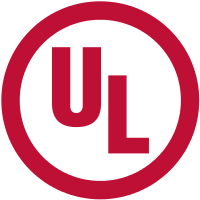VOC Emissions Testing for European Construction Products Regulation
In the European Union, ensuring that building products are safe for indoor environments is now a requirement for earning the CE Mark, which is obligatory for products sold in the EU. While the test methods used for volatile organic compound (VOC) emissions across Europe have been harmonized, there are still many differences in the acceptance levels for various member nations. UL is uniquely qualified to test products for VOC emissions and to make compliance determinations for any number of international product emissions standards (including some of the most widely referenced), such as Germany’s AgBB and DIBt, and France’s A+ standards. Definition Competing successfully in global marketplaces requires manufacturers to demonstrate that their products are safe for indoor environments. In the EU, the Construction Products Regulation (CPR) mandates that construction products should not endanger the safety of building occupants. Each country has developed its own approval guidelines. In Germany, the AgBB scheme, Health-related Evaluation of Emissions of Volatile Organic Compounds (VVOC, VOC and SVOC) from Building Products, was first published in 2000. Today, the AgBB scheme is part of the Deutsches Institut für Bautechnik (DIBt) national technicalapproval guidelines for the health-related evaluation of building products, including floor and wall materials. In France, the Grenelle Environnement law requires mandatory labeling of construction materials installed indoors. Products are labeled according to measured emission levels of TVOC and other specific VOCs. Building products are labeled with a rating from A+ for the lowest emissions, to C for higher emission products that should only be used in limited applications. The process for determining compliance with these mandates includes determining emissions factors for individual VOCs, TVOCs and SVOCs by using dynamic environmental chamber testing over a 28-day period. Exposure levels are modeled in the EU reference room and compared to health-based guidelines from various nations. Benefits For businesses operating internationally, understanding and complying with international standards can be overwhelming. As one of the most experienced, trusted name in product emissions testing, UL has a comprehensive understanding of international standards and can partner with manufacturers to harmonize product emissions testing and reporting to demonstrate compliance with many regulations. This allows manufacturers to benefit from comprehensive reporting based on a single environmental chamber test that streamlines product emissions testing and minimizes cost. By conducting product emissions testing for their products, manufacturers can differentiate their offerings in the marketplace, reaching new decision-makers and consumers seeking sustainable products.Visit the UL International (UK) Ltd website for more information on VOC Emissions Testing for European Construction Products Regulation






